Barry Salzman’s photographic documentary series shot over the 2014 festive period is a look at the untold heart of the American Dream
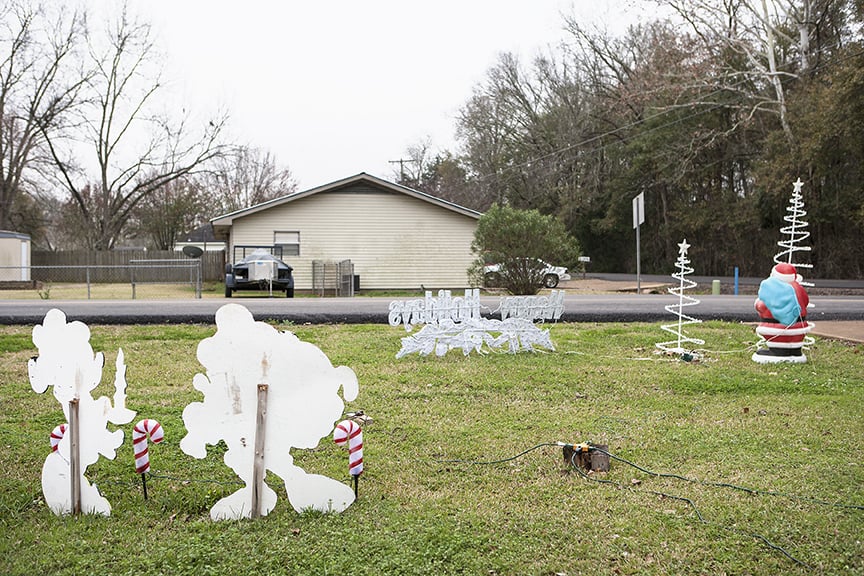 Barry Salzman, The Other Side of Christmas, 2014. All images courtesy of the artist.
Barry Salzman, The Other Side of Christmas, 2014. All images courtesy of the artist.
ART AFRICA spoke to award-winning photographer Barry Salzman about his previously unexhibited road trip documentary series, which saw him set out across the Southern states of the United States of America to build a substantial body of work that explores numerous themes and in some ways examines what it is to be ‘American’.
ART AFRICA: The Other Side of Christmas explores “the role of the open road as a facilitator for observing and understanding the USA”. In your artist statement, you mention the rich tradition of American road-trip photography. Still, other art forms – Jack Kerouac’s novel On the Road springs to mind – have also sought the road in their quest to explore America. Why do you think this is? What is the appeal of the road and travelling by car?
Barry Salzman: The changing of an environment is one of the easiest and quickest ways to re-spark, or reinvigorate, the creative process. Almost by definition, on a road trip, your environment is changing every minute, so you’re always thinking and seeing and getting new ideas. That’s the allure of the road trip for a visual artist – constantly feeding off fresh stimuli drives the work.
In 2014, you set out to explore the notion of being American – without an idea of what you would find. What was the moment that unified the concept and ultimately led to the title of the project?
I’m not quite sure there was a unifying moment – this was just after I got out of art school and, for the first time, I was working as an artist without the structure of a school assignment-driven process. One of the things I struggled with the most was deciding what to make pictures of and choosing my subject matter – particularly in an age of such pervasive digital proliferation, where it feels like every picture you’ve ever imagined has been taken a thousand times over.
Another artist I knew was working on a completely different project – he wanted to make a piece of video art in every one of the 50 states – so we decided to embark on this journey together. I didn’t have any predetermined sense of what I wanted to do, or what I was looking for, but I was a big fan of Robert Frank’s work. Like me, he was a naturalised American and defined the genre of road-trip photography with his seminal series, The Americans, in the 1950s, which at the time was seen as an indictment of American society.
I shot the work between the 2014 American mid-term elections, the precursor to the divisive 2016 presidential elections, and Christmas that year. The raw disillusionment that resulted in the Trump presidency was palpable, particularly close to the holidays. While working, I thought a lot about the difference between reality and the ‘Hallmark’ or the media-created version of what the holidays are supposed to be, which is jolly and happy and festive – everyone’s receiving great gifts, and there’s a surplus of food. In the majority of places, not just in America but anywhere, life is not that – it’s bloody difficult. Holiday time often accentuates people’s stress. While some images are literal to the project’s title, The Other Side of Christmas, most are a metaphor for the untold heart of the American Dream.
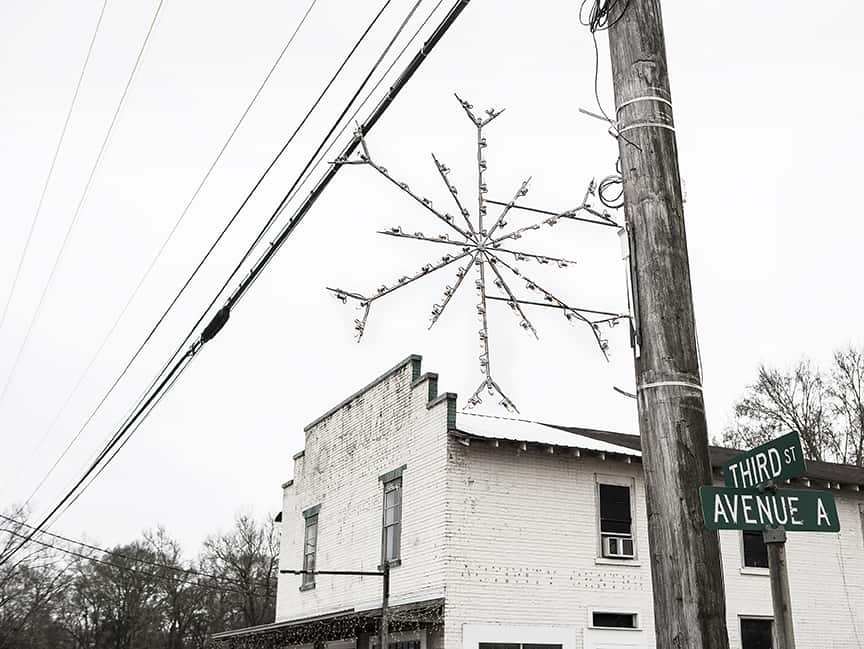 Barry Salzman, Third Street and Avenue A, 2014.
Barry Salzman, Third Street and Avenue A, 2014.
The images often feel quite lonely and are devoid of people. Was this a conscious decision?
When I shoot people, they tend to be the focus of the work. In this project, there are only two pictures with people in them, and I was very conflicted about including those in the show because, by adding people as a secondary element in the picture, you are immediately implying something about them. The lack of people is intended to make the work about time and place. It is driven by two things: firstly, where you are personally in life, and secondly, what is going on around you in a more macro sense. It’s this fusion of public and private spaces. I didn’t realise it at the time, but this work was in some ways the precursor to my deciding that I had done what I needed to do in the United States and was ready to explore other options.
For this cross-country trip, you elected to cross the Mason-Dixon Line instead of travelling west. What influenced this decision?
Given my roots in Zimbabwe and South Africa, I was always interested in the Southern United States, as it had been put to me as a place of comparable complexity. People would always say “the South is just the same” or “we were just as bad,” and I’d say that it’s not the same at all because it’s not a minority suppressing the majority. Also, an artist I admire and reference in my own work, William Eggleston, worked primarily in the South, so it felt like a richer place to start, historically and visually, in the context of contemporary art.
What did you find? Do you now have a better understanding of what America ‘really’ is like and how it’s different from your life in New York?
This series was not intended to be a fact-based analysis, but it did fundamentally shift my perception. New York City is not in any way representative of the United States, in much the same way that Cape Town is not representative of South Africa. After shooting this project, I’m not sure that I have any insightful understanding of the rest of America in contrast to NYC. Still, I am now much more attuned to the complexities and the diversity of the country.
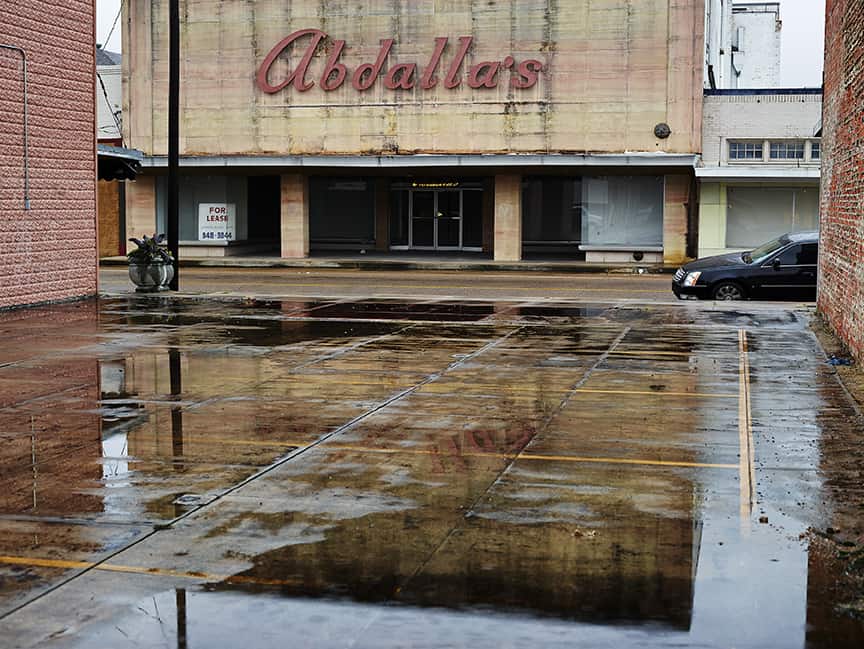 Barry Salzman, Abdallah’s Department Store, 2014.
Barry Salzman, Abdallah’s Department Store, 2014.
In your artist statement, you say that you self-identify as a New Yorker but not as an American. Can you explain the distinction? Would it be fair to say that you became disillusioned about being an American after naturalisation?
I had this extraordinary set of experiences, and I accomplished things that would never have been possible anywhere else. I’m not sure that it’s fair to say that I became disillusioned with America, but I became more aware of the myth of America versus reality. The trip caused me to think a lot about the idealism that surrounds the American Dream – as this land of opportunity and equality. When I arrived, I was absolutely a beneficiary of that. It was truly a meritocracy – the fact that I had no lineage or connections there did not get in the way at all. The American Dream was predicated on economic prosperity and upward mobility with few if any, barriers. Today, that’s simply not true. America no longer welcomes immigrants with open arms; in fact, it’s doing the exact opposite. The series brought me to the realisation that the notion of the American Dream is an outdated paradigm.
Identity is a concept you continually return to in your work. As someone who was born in Zimbabwe and grew up in South Africa before leaving to live in New York for 30 years and then returning to the country to live between Cape Town and New York, how do you identify as an artist? Do you consider yourself an African artist?
I think it’s a work in progress. It would be too simplistic to say yes or no. There is a reason that I sought out America and had 30-plus extraordinarily rich years there, but there’s also a reason that I’m back in South Africa now. For me, it feels very fluid, and I always resisted the temptation to label myself – my identity is much more complex, and I think it’s a little bit of a lot of things.
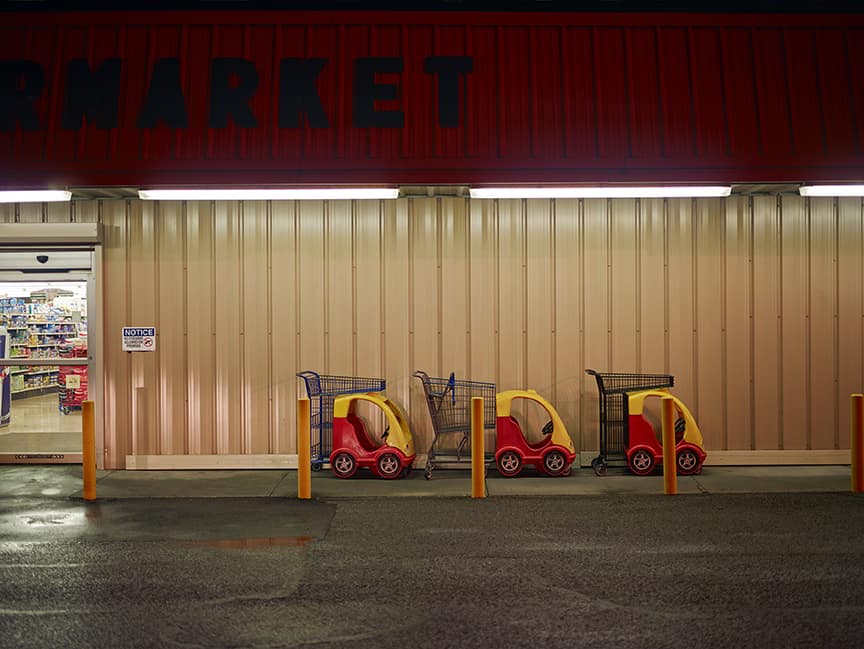 Barry Salzman, Supermarket Carts, 2014.
Barry Salzman, Supermarket Carts, 2014.
Can you elaborate on how the work of photographers like William Eggleston and, in a more South African context, David Goldblatt, influenced your work – especially in this documentary series?
As I became interested in this idea of the road as a vehicle for exploring, a lot of the artists who have worked on the open road have covered the South, including William Eggleston, whose work I admire enormously. He’s probably the photographer most credited with transitioning fine art photography from black and white to colour.
When I started photography, the camera became my tool to question the political and economic inequality in South Africa. It gave me permission, not from the subject but from myself, to go out to these areas and neighbourhoods that white kids weren’t getting onto their bicycles and going to. Right from his early work, I found David Goldblatt to be a candid and honest documentarian. To do that well, especially from the perspective of white privilege, is no trivial exercise. His work does not feel patronising at all. The work that resonates with me the most is his lesser-known landscape work, marked by vast sweeping openness and very muted tones. There’s everything and nothing in the picture, and this plays into my landscape work.
Identity, place and belonging are some of the themes prevalent in The Other Side of Christmas. There is also tension in the work – it captures derelict, sometimes decaying, settings – but it is very open to interpretation. What does the work mean to you?
I think what you’re picking up in these pictures is this mood of disenfranchisement that ultimately drove the Trump election – the series was shot during the midterm elections, two years before his victory. There were a lot of personal issues and macro themes percolating at the time. What works for me about this body of work is that it allows for a range of different interpretations and I find that satisfying. I don’t want to be too didactic. I want people to look at the work and draw different conclusions based on where they are at the time they look at it. The work is a poignant reminder that the grass on the other side is frequently browner, not greener. This is the message the work can convey to a South African audience.
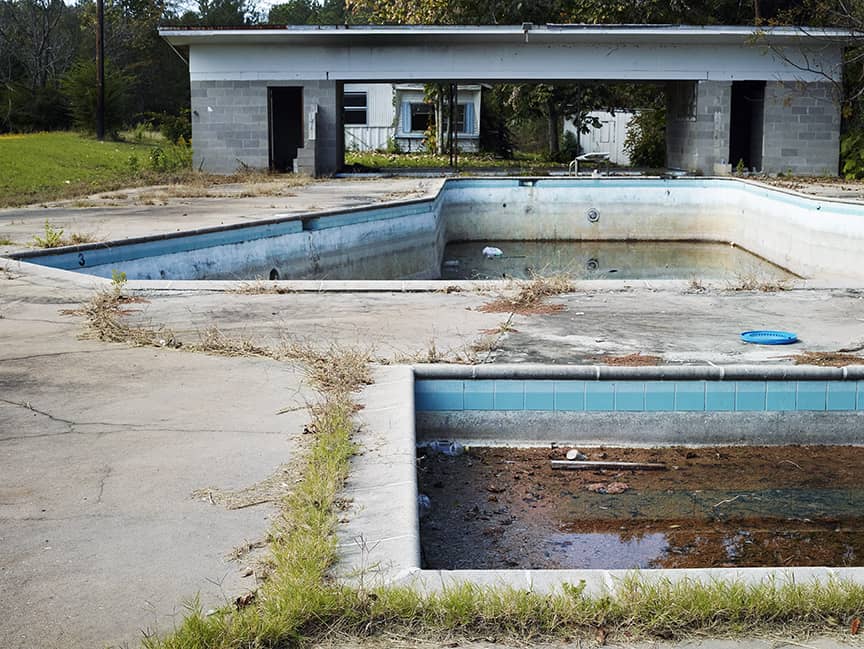 Barry Salzman, The Swimming Pool, 2014.
Barry Salzman, The Swimming Pool, 2014.
The Other Side of Christmas will be exhibited to the public for the first time at Deepest Darkest gallery in Cape Town from the 7th of November until the 28th of December 2019. The exhibition opens at 18:00 on the 7th as part of First Thursdays.
Storm Simpson



